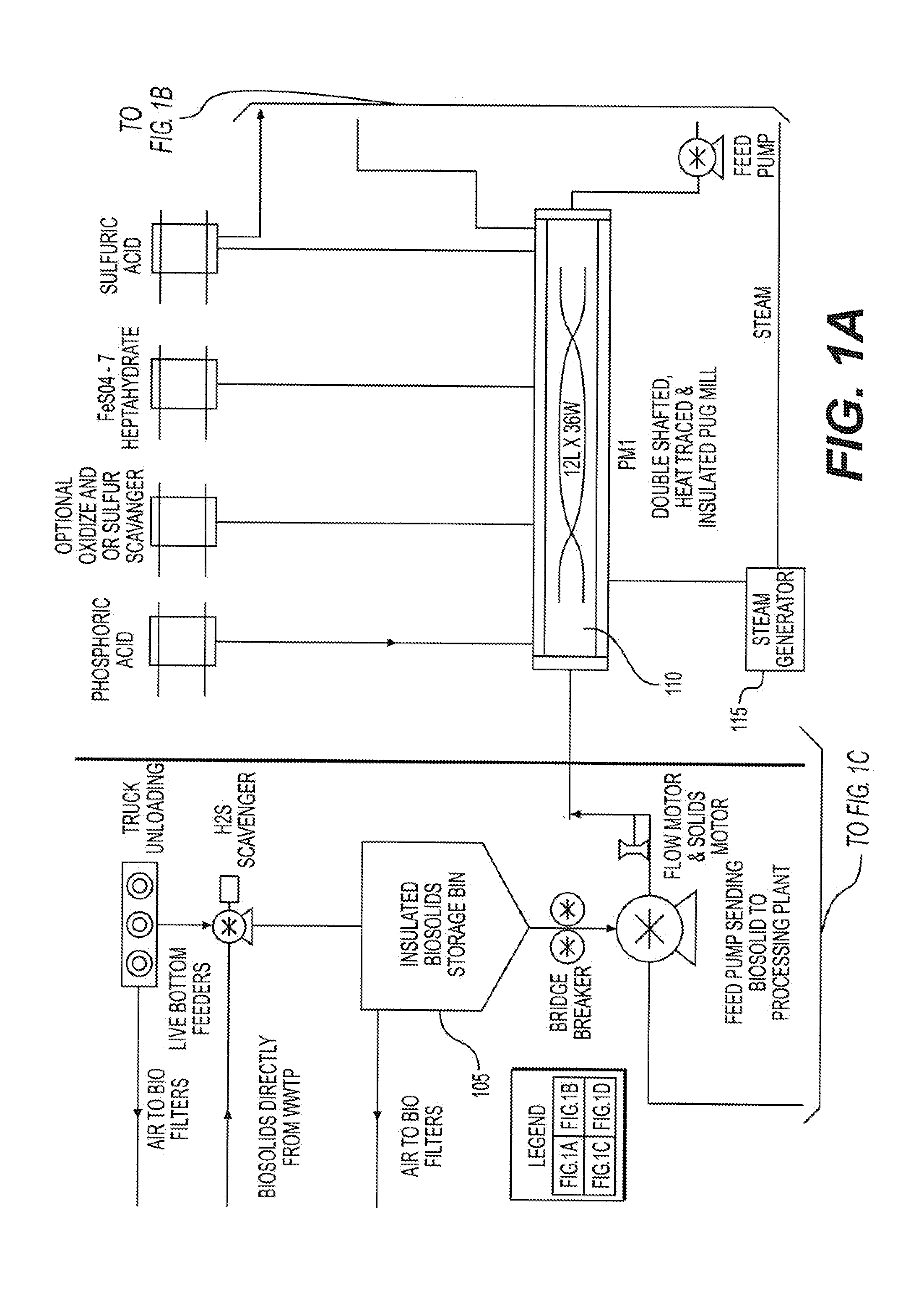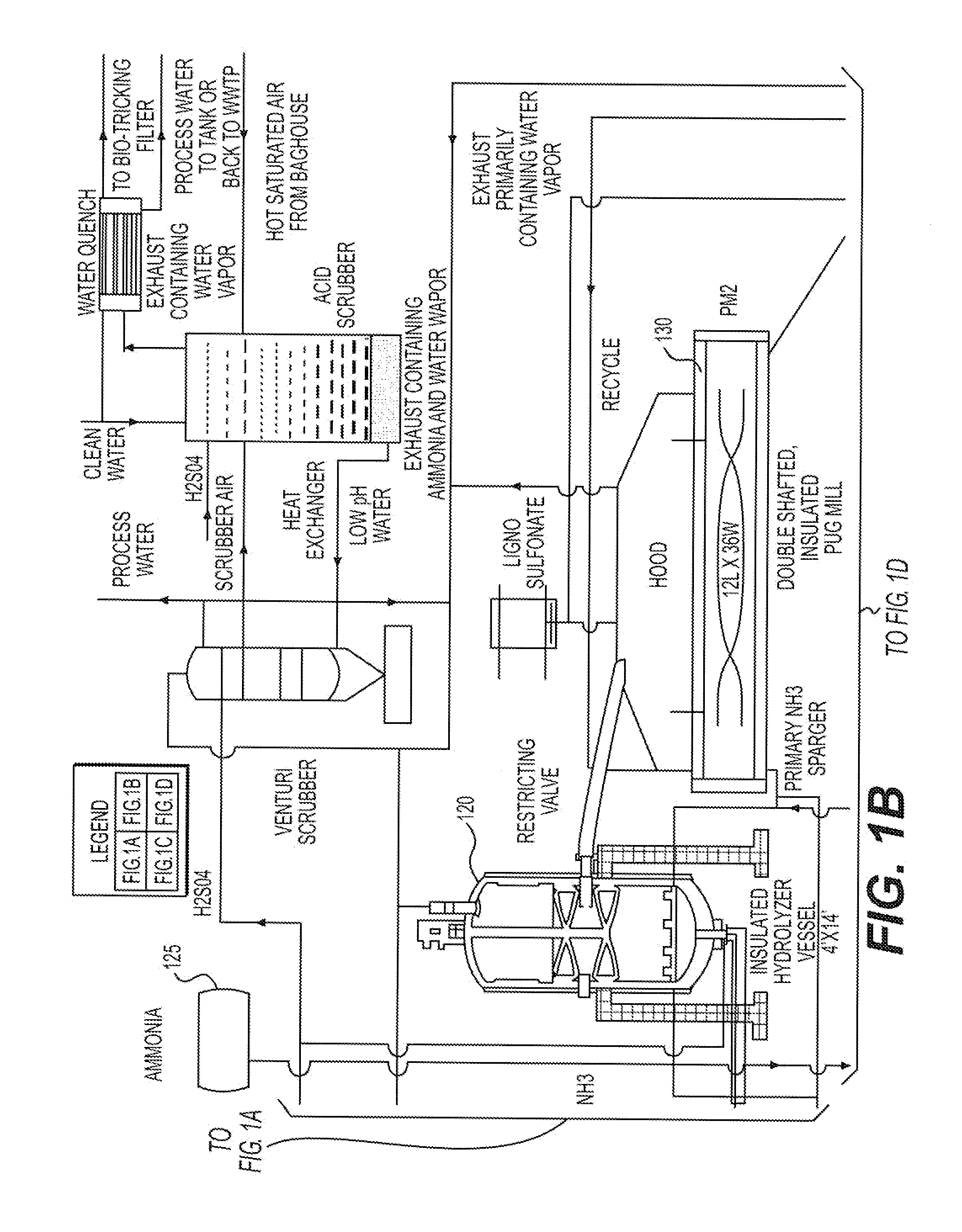Bioorganically-augmented high value fertilizer
a bioorganic augmented, high-value technology, applied in the direction of ammonium orthophosphate fertilisers, energy inputs, chemical/physical/physicochemical processes, etc., can solve the problems of biosolids being merely, the discharge of biosolids from municipal wastewater treatment plants is a serious and growing problem, and the municipal cost per dry ton of biosolids is enormous
- Summary
- Abstract
- Description
- Claims
- Application Information
AI Technical Summary
Benefits of technology
Problems solved by technology
Method used
Image
Examples
Embodiment Construction
[0040]Biosolids, especially in the form of sewage sludge from wastewater processing, pose a major disposal problem and community expense. Traditional processing results in dewatered biosolids that poses an odor and potential pathogen problem. Alternatively, processing can produce a fine powder that is either burned or transported to disposal sites. Biosolids processing may also involve heat treatment to inactivate microorganisms and other potentially contaminating materials. These processed biosolids are considered low-value fertilizers and dispersed on crops and large agricultural areas. All of these solutions are unsatisfactory and attempts have been made to sterilize the biosolids for use as a fertilizer with minimal success.
[0041]It has been surprisingly discovered that high-value fertilizer can be efficiently manufactured from raw and semi-processed biosolids. The efficiency involves a continuous flow manufacturing process augmented with nitrogen from ammonium and possibly othe...
PUM
| Property | Measurement | Unit |
|---|---|---|
| temperature | aaaaa | aaaaa |
| temperature | aaaaa | aaaaa |
| length | aaaaa | aaaaa |
Abstract
Description
Claims
Application Information
 Login to View More
Login to View More - R&D
- Intellectual Property
- Life Sciences
- Materials
- Tech Scout
- Unparalleled Data Quality
- Higher Quality Content
- 60% Fewer Hallucinations
Browse by: Latest US Patents, China's latest patents, Technical Efficacy Thesaurus, Application Domain, Technology Topic, Popular Technical Reports.
© 2025 PatSnap. All rights reserved.Legal|Privacy policy|Modern Slavery Act Transparency Statement|Sitemap|About US| Contact US: help@patsnap.com



